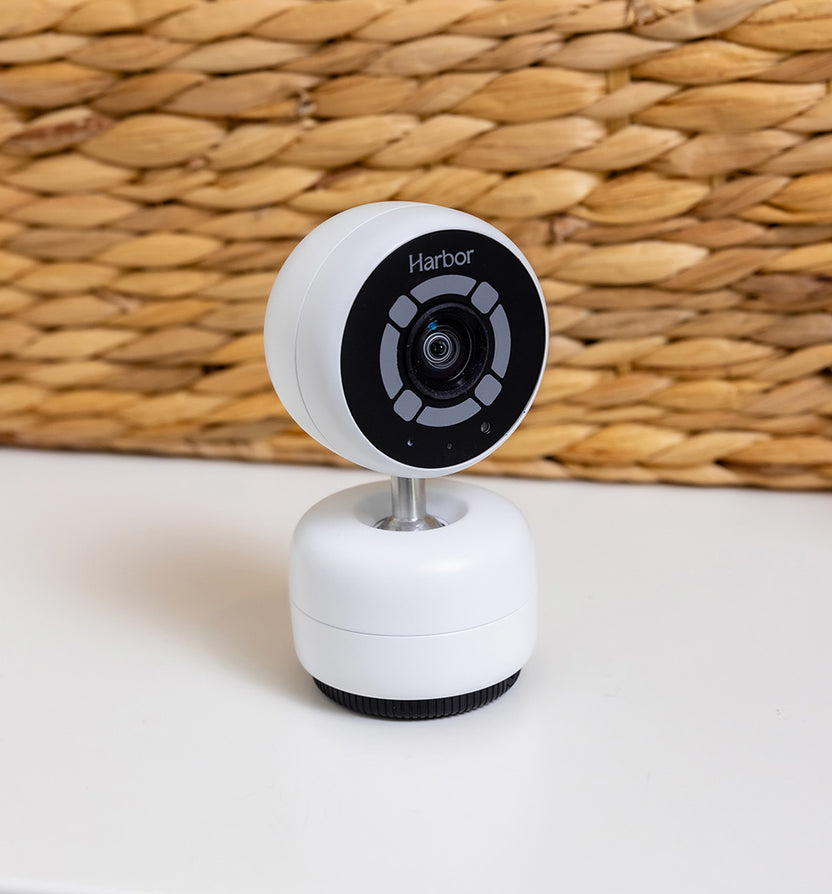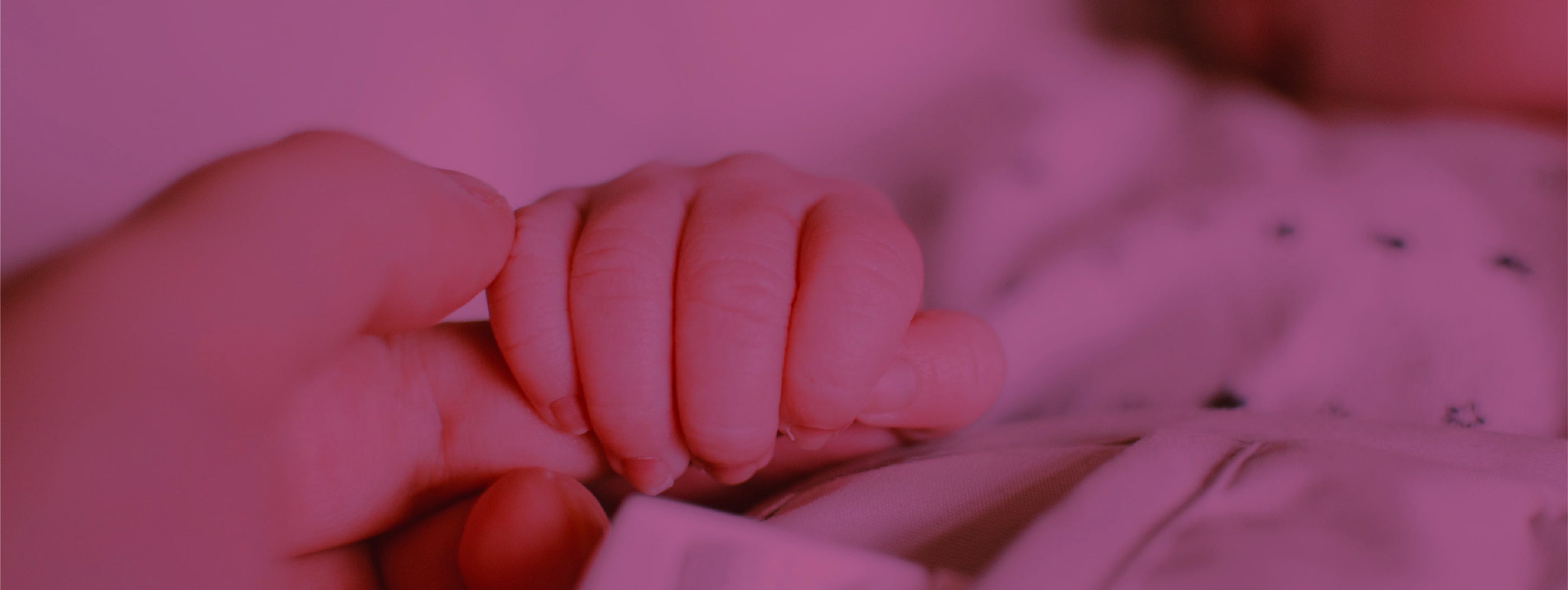
Why Harbor is the World's
Best Baby Monitor
Harbor vs. Nanit? Harbor vs. Owlet? Hint: we win.
An Introduction to Baby Monitors
Technology is supposed to solve problems and make our lives better.
In reality, it often creates new problems.
Baby monitors come with an exciting promise: easily check on your kids to see or hear if anything is wrong. As parents, we know that the moment you open the door to your kid’s room to check on them, the game is over. You’re likely going to be in there for a while! Baby monitors, ideally, should marry convenience and security, allowing you to make sure that your child is okay at any time, without needing to open their door.
Unfortunately, the way baby monitors are designed today leads to (much) less sleep for parents, increased anxiety, and very real security concerns. I cofounded Harbor because of the frustration and anxiety experienced when our Nanit system failed us. Being a parent already comes with enough anxiety and uncertainty. We shouldn’t have to monitor our monitoring! We need reliability.
When our kids were old enough to be out of their cribs, we experienced a whole new world of challenges. Giving toddlers the freedom to roam for 12 hours is particularly difficult. Are they climbing on things? What have they flushed down the toilet? Did they get out of the room? This uncertainty and difficulty can last for years, but with a good baby monitor, things can be a bit more manageable. Or at the very least, you can rewind your video feed to see how the destruction you encounter came to be and hopefully get a chuckle out of it.
Today, there are two categories of baby monitors: old-school radio monitors and WiFi cameras with apps to run on your phone or tablet.
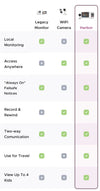
Old-School Radio Monitors
Old-school radio monitors come with a camera and typically a dedicated 3–5-inch monitor. Some monitors can connect to multiple cameras while others can’t. They’re fairly commoditized and typically cost $100–150.
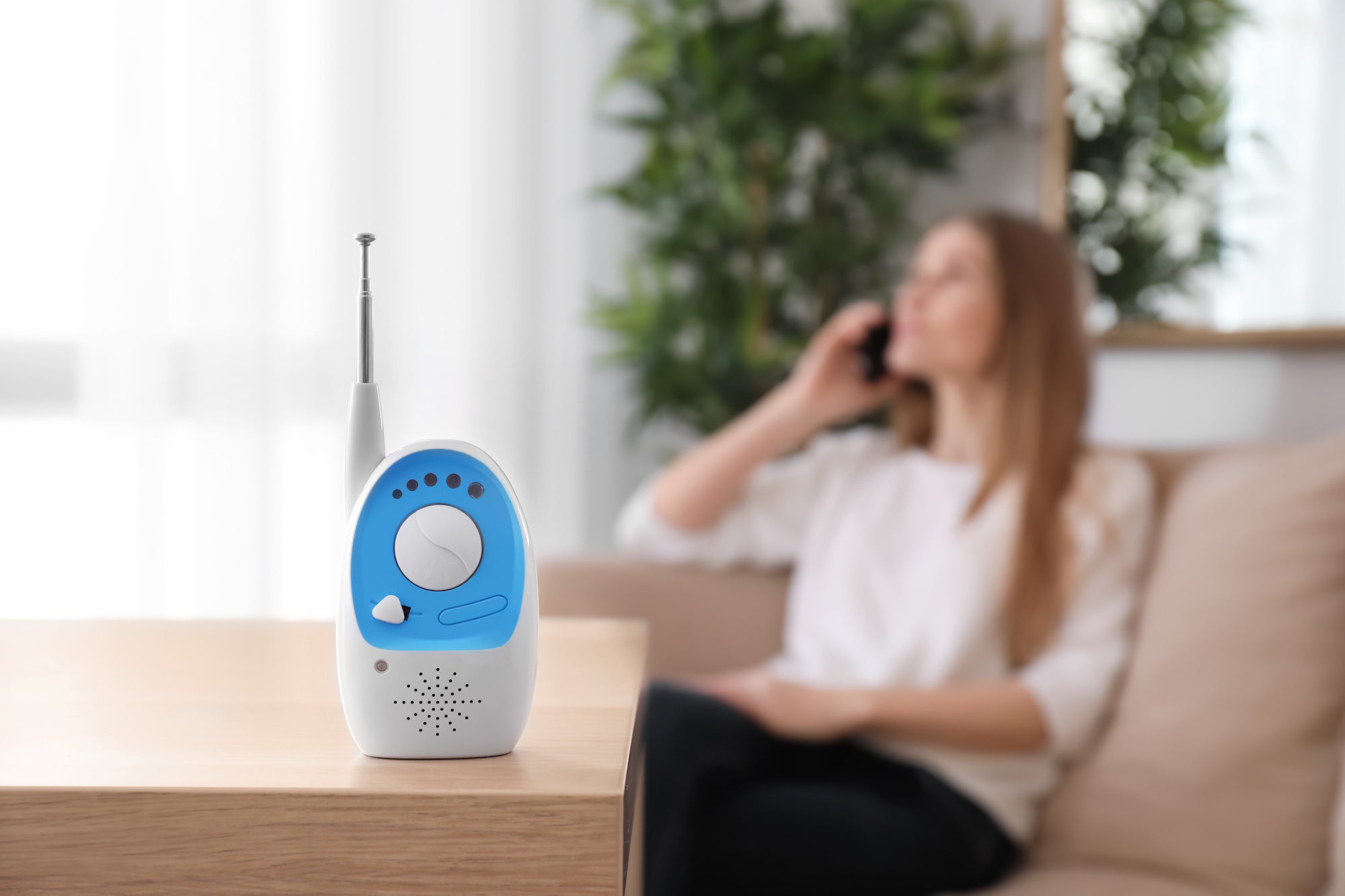
The benefits of these systems include:
Dedicated monitor:
The monitor’s only purpose is to keep track of your baby. Single purpose technology with something as important as tracking your baby is functionally important and provides peace of mind.
Failsafe alerts:
If the monitor loses connection to its camera, it will blast an alert at you. This means you can sleep soundly knowing that you’ll know if you lose connection.
Battery alerts:
If the monitor’s battery is dying, it will beep at you until you plug it in.
Hand it to your babysitter:
There’s no need to have babysitters or caregivers download an app with permissions that you now have to manage. You can simply hand them the monitor.
Easy to travel with:
You don’t have to connect to another WiFi network, so it works anywhere you travel, including hotels and at the grandparent’s house with the unreliable WiFi network.
The drawbacks of these systems include:
Exceptionally limited range:
Families living in houses with thicker walls or multiple floors may find that the camera feed doesn’t reach from a child’s room to their bedroom. You may also not be able to sit in your backyard while still monitoring your child.
Security:
Most of these devices use similar frequency ranges and channels and are easily hacked if someone is in range. These are almost never encrypted or secure devices.
No remote access:
Parents cannot access these camera’s streams outside of the monitor’s range, meaning they cannot check in on their kids while at work, traveling, or even out to dinner.
No record and rewind:
If you leave your kids with a babysitter, caregiver, or even a family member, the ability to look back on footage can provide peace of mind should concerns arise. Radio monitor systems do not support this functionality.
Multiple Cameras:
Monitoring multiple children is cumbersome. If you’re using multiple cameras, most radio monitor platforms will require you to cycle between each camera’s audio feed. This makes it very difficult for parents to fall asleep, as audio constantly cuts from one stream to another.
Significant IR LED exposure:
Most of these cameras blast IR LEDs to allow for night vision because they weren’t designed well from the start. The data on LED exposure is mixed at the current moment, but given some children sleep with their eyes partially open, too much IR LED light can be problematic.
Low Quality:
Most of these devices are poorly made, manufactured in China, and unable to withstand basic use as buttons stop working, the plastic cracks, and connections can end up becoming unstable. As a personal anecdote, I ended up having to replace ours at least 4 times across two children given how often they broke.
All on or all off:
These devices do not offer any semblance of smart audio or threshold adjustments given the nature of their design and functionality.
WiFi App-Based Cameras
A WiFi app-based camera is basically a security camera that you point at your child’s bed.
You can access the video feed on an app, but it is fundamentally not a baby monitor. I learned this the hard way when our Nanit app crashed one night. It was incredibly alarming to wake up and have no idea how long we hadn’t been monitoring our son. It only takes one time to lose your trust in a device like this, introducing a constant anxiety for the rest of the time you use these systems.
The leaders in this space are Nanit and Owlet, both of which highlight their biometric tracking offerings. The pediatric and scientific community, including the American Association of Pediatrics, advise against using off the shelf biometric tracking devices.
Ultimately, these systems are both a WiFi camera that relies on an app for monitoring.
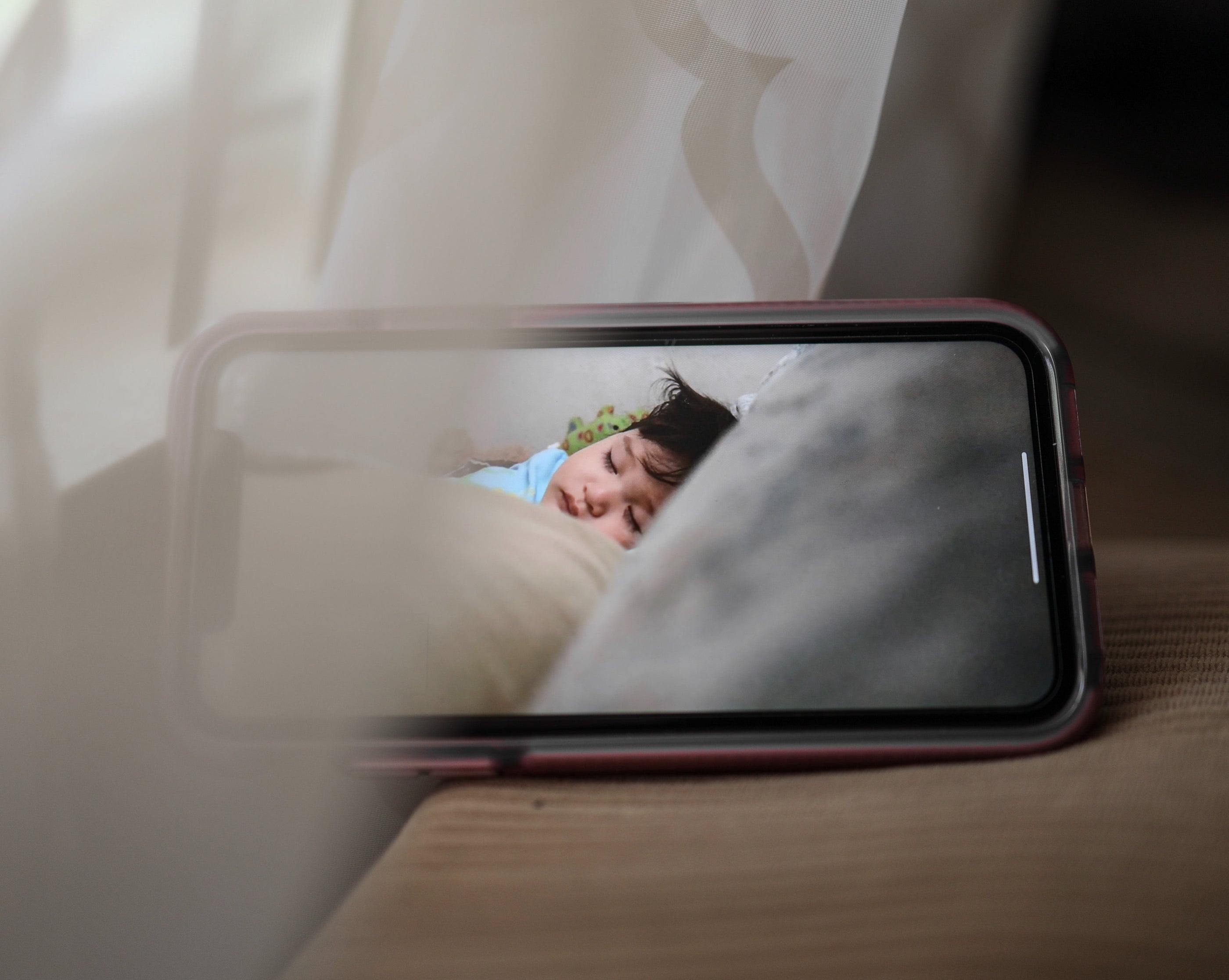
The benefits of these systems include:
Remote access from anywhere:
Because the camera is connected to your home WiFi, you can access the video feed through your app anywhere in the world.
Record and rewind:
Depending on the plan you have purchased (as most of these products require an additional subscription), you can rewind through past events and record specific moments. Some cameras will do so automatically.
The drawbacks of these systems include:
You can only use an app:
Apps aren’t reliable. If they crash, you may or may not be notified. If you do anything else on your device, there’s no guarantee that the app is still streaming audio of your child.
No failsafe alerts:
There is no way to guarantee you will be notified if the app crashes or your device dies.
No monitor:
Accessing a video feed on your phone is convenient at times, but being tethered to your phone 24/7 has many drawbacks. Sleeping next to your phone isn’t good for your wellbeing! Most of us are addicted to our phones to begin with, and being forced to use your phone to monitor your child makes it more difficult to have dinner with your spouse or relax with a book or movie at night.
Dependent on your phone’s battery level:
If you forget to plug your phone in at night or an outlet is dead or turned off, you won’t be notified that the monitor has stopped working before or when your phone dies. Running audio in the background on your phone also drains your battery very quickly.
Guest access is a real challenge:
Some of these systems, like Owlet, require you to share your username and password with caregiver, while others make you navigate a complex web of guest permissions that can leave you wondering if the babysitter from last weekend can still see your child.
Significant IR LED exposure:
Most of these cameras blast IR LEDs to allow for night vision because they weren’t designed well from the start. The data on LED exposure is mixed at the current moment, but given some children sleep with their eyes partially open, too much IR LED light can be problematic.
Monitoring multiple children is cumbersome:
Managing the individual volume and zoom of multiple cameras is either not possible or very difficult. These systems were not designed for families with multiple children. Finally in 2023, Nanit enabled parents to listen to just two children simultaneously, though with limited functionality. As of early 2024, parents still cannot listen to 3 or more children simultaneously with them.
Uncertain supply chain and security concerns:
Some manufacturers of WiFi app-based cameras are using Chinese chips from suppliers with questionable security with uncertain firmware implications. Put differently, it will be hard to prove there is no backdoor access to your footage, especially as they route all your footage through servers that may be outside their direct control.
As mentioned earlier, after doing a ton of research, I bought a Nanit and signed up for one of their subscription plans. I woke up one morning to discover their app had crashed sometime in the middle of the night.
We had no idea how long we hadn’t been monitoring our kid. After sprinting to his room and seeing that he was fine (kids are more resilient than we parents give them credit for), I started looking for a solution. We bought an old-school radio camera and monitor.
Ultimately, we used both a radio monitor and WiFi app-based camera because we needed the failsafe access of the former and remote record and rewind functionality of the latter. I couldn’t believe there wasn’t an actual quality option that married this functionality across systems in a secure, reliable way. So many parents we’ve spoken to have also built their own “parallel” system to get the best of both worlds.
My son is now seven years old. There still isn’t a system that parents can rely on to provide failsafe alerts and remote access through a quality, holistic solution.
Until now.
Introducing Harbor
Harbor sets the new standard in baby monitor reliability, security, and quality.
We’ve combined the best of both worlds.
Harbor offers the first and only baby monitoring system with a dedicated, local Monitor that works without internet and securely connects to the cloud if and when you want it to, allowing you to access your monitor’s record and rewind functionality anywhere.
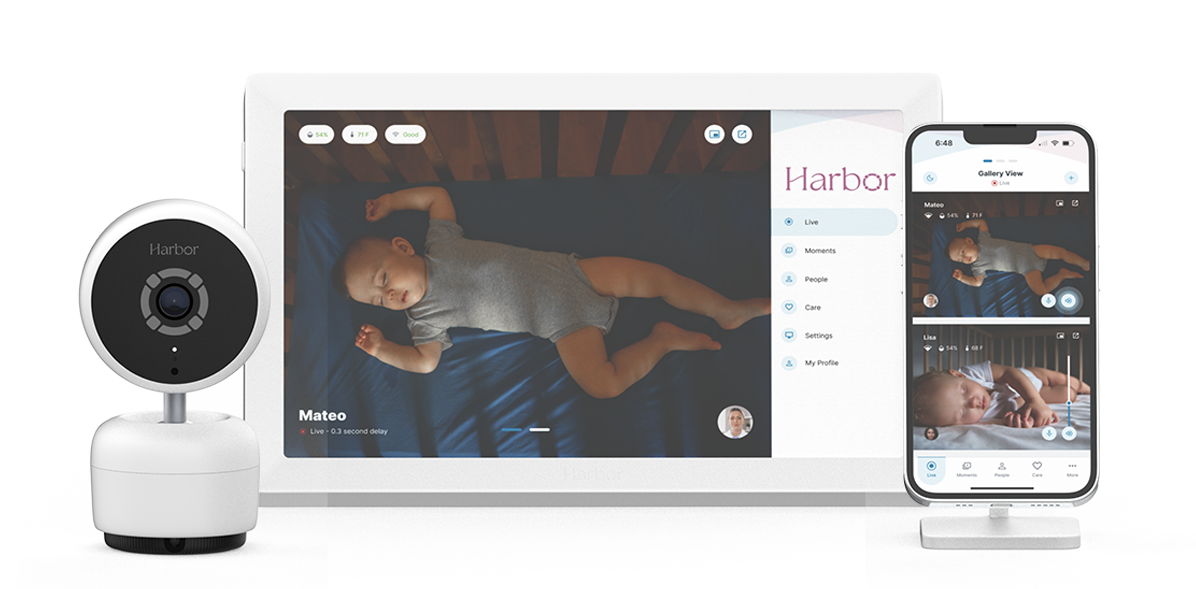
Harbor's Features Include:
Reliability:
Harbor comes with a dedicated, local Monitor that works with or without internet and securely connects to the cloud if and when you want it to.
Failsafe notifications:
Harbor ensures constant connectivity with our dedicated Monitor, even if your internet goes out. You’ll be alerted to any loss of connection or if your battery is dying, so you can rest easy every night without having to monitor your monitoring.
Image quality:
Harbor streams locally in up to 2K high-resolution with premium night vision capabilities. With no cloud connectivity required, you get a much higher quality, faster stream. Our superior night vision uses minimal infrared light.
Expert care:
Contact our Remote Night Nannies, infant care experts, and Lactation Consultants for personalized guidance.
Privacy and security:
With security a bigger concern than ever before, we chose to make Harbor devices outside of China, with security built in from the beginning. Your data is stored on your own camera, ensuring exclusive access with end-to-end encryption. Unlike other cameras, Harbor doesn’t store your images or audio in our cloud. Many WiFi camera companies don’t even use their own cloud services, further jeopardizing the security of your streams.
Travel ready:
Harbor’s Camera communicates directly with its monitor, making it travel friendly. You don’t have to worry about the WiFi gateway or availability wherever you take your little one.
Superior quality:
Our Camera and Monitor are premium devices, beautifully built with solid materials. You won’t feel the need to hide them when company comes over! They’re also the same price as leading products on the market today despite offering so much more.
Smart audio:
Harbor offers optional smart thresholds for noise, motion, and time, reducing unnecessary disturbances. You can customize audio activation thresholds with Harbor’s Smart Audio feature, ensuring a restful sleep for both you and your baby.
(Suitable for healthy children over 1 year.)
Monitor wake-ups:
Harbor’s Monitor remains dark during sleep and wakes up to alert you when you’re needed, granting you a more restful sleep.
No differing subscription tiers:
Your one Harbor membership includes everything. Enjoy all features - including future features - and benefits without the hassle of multiple subscription tiers.
Guest access:
Harbor’s membership lets you stay in control of guest access, with day passes, weekly schedules, and more. You get full control and visibility into who is watching. Other companies require you to share your main username and password to allow guest access, while others require you to remember each individual who received access, meaningfully reducing trust in your system.
Up to 48 hours of full history and 30 days of saved moments:
Harbor stores up to the last 48 hours of video and audio and allows you to save select moments for up to 30 days.
IR Sensitivity Enhancement:
Harbor’s 940nm IR LEDs are gentle on the eyes and better overall compared to competitors that use multiple 850nm and 940nm LEDs. Harbor utilizes only 2 IR LEDs - many competitive products use up to 8! This means far less light on your baby’s eyes each night.
Apple Watch alerts:
Get parent-specific haptic alerts on your Apple Watch for better sleep and easier coparenting. One parent can choose gentle haptic wake-ups when they’re needed (for failsafe security has a short time window to disable the alert on the Monitor) and can leave the other parent gently in slumber while they tend to the child.
Mobile and web app:
Our robust mobile app gives you access to your feed on the go. You can also access your camera via desktop with a picture-in-picture feed, allowing you to keep an eye on your little one while you are working on your computer or watching a movie.
Custom perimeter motion zones:
Set personalized motion zones for precise alerts where you want them, allowing you to be notified if your child gets out of their crib or leaves their room.
Custom notifications:
Get push, SMS, phone, and email alerts for different notifications.
As we built harbor over the last two years, we have gotten quite a few questions as to how we stack up against our competitors.
Harbor Vs. Nanit
There are many differences, but the most fundamental problems parents face with their product is the absence of a dedicated monitor. They force you to use an app as your monitor, and apps on phones or tablets can never be relied upon to remain connected and alert you in the event of a disconnection. If the app or your phone crashes, there is just no way for it to tell you that you’re no longer monitoring your child. Having an app is great! Having to rely on it is not.
Here are some other differences between us:
1. Harbor works with or without internet or your WiFi network. They will always require parents to leverage a third-party WiFi network. If your router glitches or goes down, you will not be able to monitor your child or be alerted that you’ve lost connection.
2. Harbor offers parents failsafe notifications from a dedicated Monitor. They cannot do so.
3. Harbor’s direct local stream offers superior streaming visibility.
4. Leveraging Harbor’s platform, we offer all night long, eyes-on expertise in a secure environment through our Remote Night Nanny service. No competitor offers this.
5. While you’re inside your home, your Harbor stream doesn’t leave your home. In comparison, they route your feed through their cloud and store your footage in their cloud. With Harbor, the only time your stream leaves your house is when you use our app outside the home or if you grant Harbor access to it for support or expert care.
6. Harbor is plug-and-play wherever you’re traveling, whether you’re in a hotel, a location with poor WiFi, or somewhere without WiFi altogether. Their product cannot be used in hotels and certain locations where access gateways block you from adding devices like cameras to their networks. If you travel somewhere with no WiFi, it is impossible to use them.
7. Harbor’s optional Smart Audio is customizable and adaptable, allowing you to hear only what matters and get sleep at an age-appropriate level. They may send you alerts when it recognizes sounds.
8. Your Harbor membership covers everything. They require you to add additional subscription tiers for most of their features or storage.
9. Harbor has robust, privacy-first guest and caregiver access. They require all caregivers to download their app and accept your invitation. You then have to manage guest permissions on an ongoing basis. You can hand the Harbor Monitor to a babysitter and never worry about their access again, or leverage customizable guest passes for remote and in-app access by the hour, day, or recurring schedule.
10. Harbor offers parent-specific Apple Watch haptic alerts. They do not.
11. Harbor has a desktop app that allows you to view your stream on your desktop with picture-in-picture. They do not.
12. Harbor uses substantially fewer and lower intensity IR LED lights. They use 4 850nm IR LEDs while Harbor uses 2 940nm at lower power. Lights at night can interfere with sleep.

*Pictures were taken with an iPhone 13 at 18” away without any exposure or ‘live’ settings. LEDs appear more ‘red’ than this image to the naked eye, but they appear slightly purple due to the iPhone’s image sensors.
Importantly, Harbor will not sell biometric tracking solutions until the medical community fully supports them and clinical trials can prove their efficacy.
In comparison, they promote a breathing band that purports to catch potential issues as a means of reassuring parents. Unfortunately, as we’ve written about, no such reassurances can be made. Parents should follow safe sleep guidelines and consult with medical professionals if their child’s health is at risk.
Harbor Vs. Owlet
Many of the differences between Harbor and Nanit are the same with Owlet. They force parents to rely on an app. From our personal experiences with their app, it had more issues in terms of latency, crashes, and forced resets.
The pursuit of a reliable baby monitor has been quite the journey for us parents.
We've all hoped that technology would make a challenging experience easier, yet it adds to our worries instead. Traditional monitors have their limits, and those high-tech, WiFi cameras? They bring a whole new set of concerns.
That’s why we created Harbor. Harbor is a breath of fresh air in the world of baby monitors. With its mix of old-school reliability and modern technology, Harbor delivers what we've been longing for. No more sleepless nights or app crashes—just genuine peace of mind.
